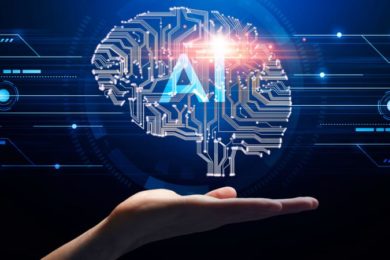Weir has acquired Sweden-based SentianAI in a move that, it says, will accelerate its technology roadmap and expand its digital capability to provide enhanced productivity and sustainability offerings to customers. SentianAI is a developer of artificial intelligence-based solutions that optimise performance in minerals processing. Founded in 2016, it is based in Malmö and has a team of software developers and data scientists.
The software that SentianAI develops uses advanced AI algorithms that continuously learn and adapt to the dynamic processes within a mine, providing continuous improvement and optimisation over time, Weir says. Jon Stanton, CEO of The Weir Group, said: “Digital technology has an important role in helping address the challenges of declining ore grades, production efficiency and CO2 emissions for our customers. SentianAI’s advanced software solutions complement and will bridge our Synertrex® and Motion Metrics™ technologies well. Together, these will enable us to provide holistic performance monitoring and optimisation for smart, efficient and sustainable mining.”
Earlier this year, SentianAI and Xore Analyzers formed a strategic cooperation to combine XORE’s XRF analysers, which provide real-time data on metal content, with SentianAI’s machine-learning technology, which adapts to variations in ore properties. The pact, SentianAI says, could allow mining operations to improve their recovery rates and overall efficiency.
IM interviewed SentianAI Founder and CEO Martin Rugfelt last year on its technology and approach. He said it already had a flotation project targeting increase of recovery rate but also the stabilisation of the circuit performance. It was also working on optimising a crushing and grinding circuit with the primary goal of an increase in throughput.
Martin Rugfelt, SentianAI Founder and CEO

When asked how its approach differed to other AI approaches in industry he commented: “A lot of the ‘traditional’ AI systems we see are actually AI toolkits/platforms that are sold on the basis that the customer can create AI logic that they need to solve specific problems without having to understand the detailed data science. Unfortunately, without knowledge of the underlying AI and data science, creating AI for complex systems eg control processes is very difficult. As a result, many ‘traditional’ AI systems are abandoned after purchase. Sentian has taken a different approach. Our SentianController is explicitly designed to optimise control of industrial processes, so when customers buy it, they already have the AI algorithms developed and tested for the complexity of control system optimisation. It is effectively a point solution that means you do not need a large data science team to build and run the AI solution.”
He added on the underlying technology: “SentianAI has worked for many years to select the best algorithms and refine how these algorithms work to deliver a unique AI system that has been designed to control and optimise industrial processes. This is very complex and requires some of the latest technologies in AI to be able to achieve the necessary control. We have also developed a system that can uniquely be applied in stages as data quality improves and operator confidence increases – going from making recommendations to fully autonomous control at the speed our customers want. This allows customers to build confidence before committing to fully autonomous control. We have chosen not to patent our solution as it would have exposed the technology, however, we would argue it is very unique.”
He said the system is also capable of self-adaptation, which can be achieved when you have both the right data and the right AI models. “The AI creates a dynamics model that is made from both historical and ‘live’ operational data. It can then choose the set of control parameters that deliver optimum performance towards a specific goal, eg maximum production for minimum energy usage. In comparison to traditional supervisory control systems it adapts to changes in the process. For example, if the process changes for some reason, leading to new data points, the AI incorporates these into its model, new predictions are made, and new control parameter settings are used. New goals can also be set, resulting in SentianController choosing the best control parameters to achieve those goals.”










